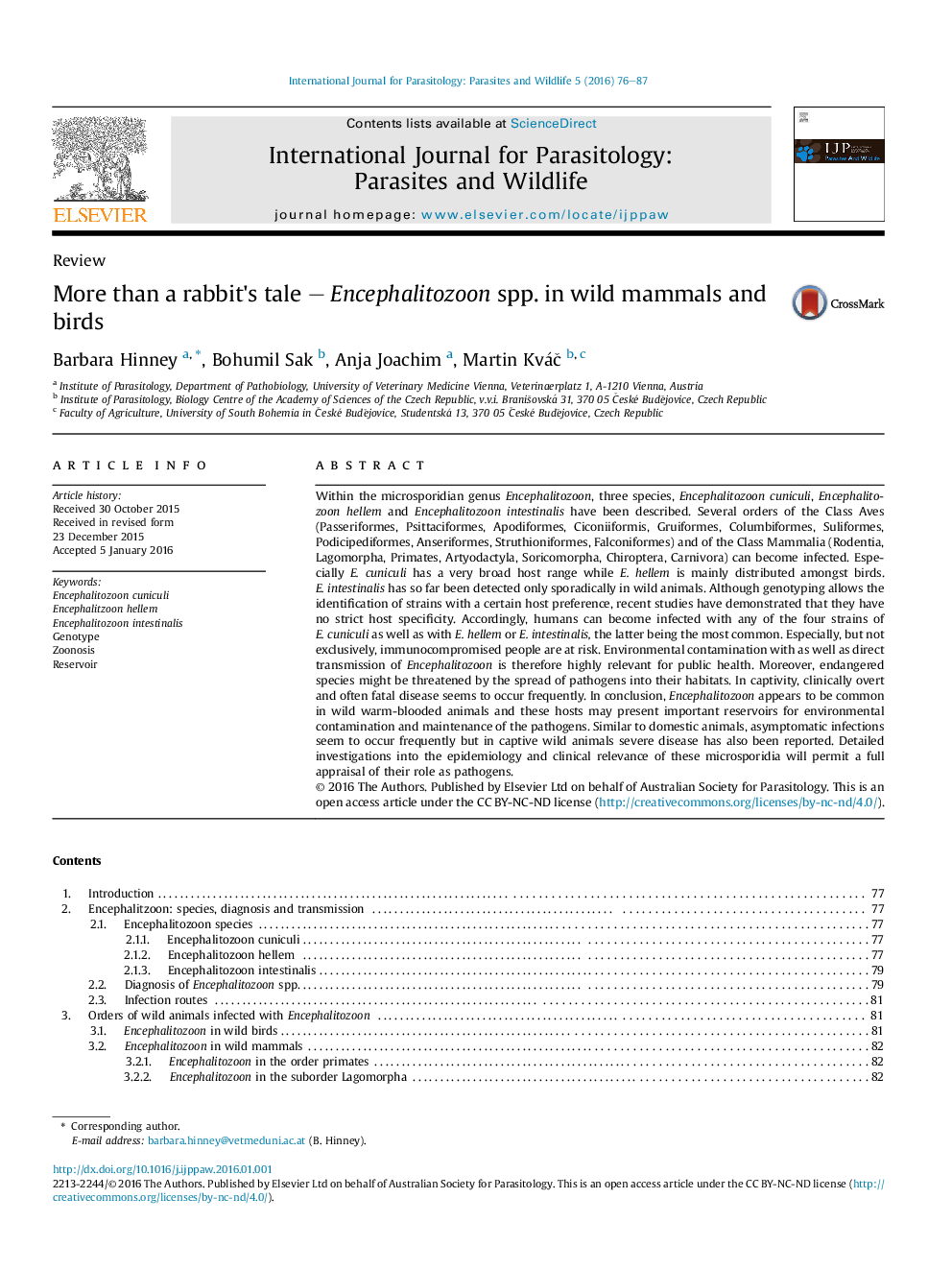| کد مقاله | کد نشریه | سال انتشار | مقاله انگلیسی | نسخه تمام متن |
|---|---|---|---|---|
| 2055350 | 1075741 | 2016 | 12 صفحه PDF | دانلود رایگان |
• All groups of warm-blooded animals can be infected with Encephalitozoon spp.
• Infection of wild animals with Encephalitozoon might have a zoonotic impact.
• Foxes and coatis might be useful sentinel animals.
• Captivity might trigger clinical disease in latently infected animals.
Within the microsporidian genus Encephalitozoon, three species, Encephalitozoon cuniculi, Encephalitozoon hellem and Encephalitozoon intestinalis have been described. Several orders of the Class Aves (Passeriformes, Psittaciformes, Apodiformes, Ciconiiformis, Gruiformes, Columbiformes, Suliformes, Podicipediformes, Anseriformes, Struthioniformes, Falconiformes) and of the Class Mammalia (Rodentia, Lagomorpha, Primates, Artyodactyla, Soricomorpha, Chiroptera, Carnivora) can become infected. Especially E. cuniculi has a very broad host range while E. hellem is mainly distributed amongst birds. E. intestinalis has so far been detected only sporadically in wild animals. Although genotyping allows the identification of strains with a certain host preference, recent studies have demonstrated that they have no strict host specificity. Accordingly, humans can become infected with any of the four strains of E. cuniculi as well as with E. hellem or E. intestinalis, the latter being the most common. Especially, but not exclusively, immunocompromised people are at risk. Environmental contamination with as well as direct transmission of Encephalitozoon is therefore highly relevant for public health. Moreover, endangered species might be threatened by the spread of pathogens into their habitats. In captivity, clinically overt and often fatal disease seems to occur frequently. In conclusion, Encephalitozoon appears to be common in wild warm-blooded animals and these hosts may present important reservoirs for environmental contamination and maintenance of the pathogens. Similar to domestic animals, asymptomatic infections seem to occur frequently but in captive wild animals severe disease has also been reported. Detailed investigations into the epidemiology and clinical relevance of these microsporidia will permit a full appraisal of their role as pathogens.
Figure optionsDownload as PowerPoint slide
Journal: International Journal for Parasitology: Parasites and Wildlife - Volume 5, Issue 1, April 2016, Pages 76–87
